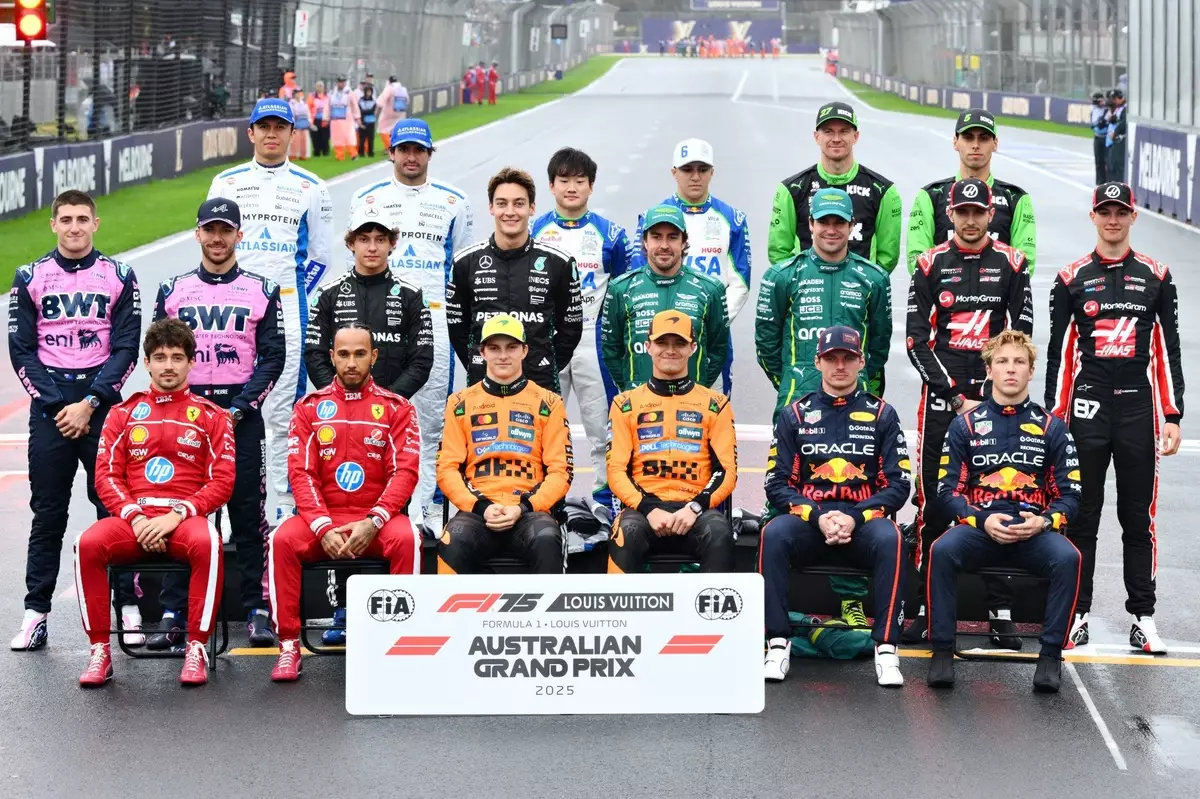In the high-octane universe of Formula 1, Max Verstappen’s contract situation remains one of the sport’s most tantalizing enigmas. Though his current deal with Red Bull extends until 2028, whispers of performance clauses and unmet targets suggest that the Dutch prodigy’s future isn’t as sealed as it appears. This creates a fascinating tension: is Verstappen contemplating an exit, or is he simply leveraging his value to warrant improved terms? The answer holds immense implications for the F1 grid’s architecture.
Despite Verstappen’s undeniable brilliance throughout the 2026 season, the uncertainty about whether he has fulfilled all his contractual incentives muddies the waters. If some clauses remain unachieved, Verstappen could theoretically explore alternative options, including a switch to rival teams like Mercedes—long an admirer of his talent, with team principal Toto Wolff rumored to be eyeing the Dutchman as a top-tier acquisition. Such a move would upend political and sporting hierarchies in F1, especially if Red Bull’s new management structure and engine supplier plans falter or underperform. In essence, Verstappen’s decision might be less about loyalty and more about strategic positioning—an athlete weighing the best platform for future dominance.
The replacement of Christian Horner with new management at Red Bull, alongside the shift towards an unproven Ford-backed power unit, introduces additional variables. The team’s current struggles might sway Verstappen’s calculus—if the team falters in 2026, his desire for a winning car could ignite his departure. Conversely, if Red Bull surpasses expectations, the Dutch superstar might see no reason to leave the comfort of a competitive, championship-winning environment. The tension lies in the possibility that Verstappen’s true intentions remain hidden, fueling speculation and uncertainty—a catalyst for upheaval within the sport.
Strategic Schisms and the Future of Mercedes and Ferrari Drivers
The ripples of Verstappen’s potential departure extend directly into the driver market, especially affecting Mercedes’ George Russell. With his contract ending at season’s close, Russell faces a pivotal crossroads. His reputation as a talented but inconsistent driver leaves questions about his long-term viability at Mercedes, particularly if Toto Wolff perceives a need for a more proven race-winner to challenge the top contenders. The rivalry, tinged with mutual skepticism, suggests a tough negotiation landscape—if Mercedes finds an alternative driver who better aligns with their ambitions, Russell’s future could be out of their hands.
Similarly, at Ferrari, Kimi Antonelli’s uncertain situation underscores the fragility of rookie prospects in F1. While his talent is often acknowledged, recent on-track struggles indicate that the Italian team might be hesitant to block potential future stars from showcasing their skills elsewhere. A decision to loan or swap Antonelli for seasoned talent could reshape Ferrari’s driver lineup or risk losing a promising driver to rivals.
Aston Martin, with the first Adrian Newey-designed car set to debut in 2026, also looms as a potential sanctuary for unsettled drivers. If the Silver Arrows or Ferrari falter, teams like Aston Martin may become more aggressive in recruiting reflectively talented drivers, pivoting their strategy toward long-term stability rather than short-term fixes.
Emergence of Newcomers and the Shadow of Cadillac’s Entry
The 2026 grid promises fresh faces and strategic shifts, especially with Cadillac’s imminent F1 debut. Backed by General Motors’ formidable resources, Cadillac’s entry signifies a new chapter—one that could shake up the driver market profoundly. The team’s apparent inclination towards experienced, proven talents such as Sergio Perez and Valtteri Bottas reflects their preferencing a balance of skill and reliability essential in building a competitive new outfit.
Notably, Perez, with his veteran presence and recent success, emerges as a likely choice, potentially becoming the cornerstone of Cadillac’s initial lineup. His background in top-tier teams makes him a valuable asset for a newcomer eager to establish credibility. Conversely, talent like Mick Schumacher and Zhou Guanyu could find opportunities in this new American-backed squad, providing them the platform to showcase their mettle without the intense scrutiny faced within established teams.
The potential drive of American prodigy Jak Crawford, a rising star in Formula 2, exemplifies the sport’s widening talent pool. For these young drivers, Cadillac’s entry is both an opportunity and a gamble, offering a launchpad that could rival traditional powerhouses if the team’s resources and strategy are effectively marshaled.
As we stand at the midpoint of 2026, the driver lineup’s future remains a complex web of contracts, ambitions, and strategic calculations. Verstappen’s uncertain departure could trigger a cascade of moves across the grid, reshaping team hierarchies and igniting fresh rivalries. Meanwhile, the emergence of new teams and the shifting priorities of established contenders signal an unpredictable and fiercely competitive era.
In an environment where every performance, political nuance, and contractual clause can alter the landscape, teams and drivers alike are navigating a delicate dance. The next few months will reveal who has the vision, patience, and courage to adapt and thrive amid the chaos—unfolding a new chapter in the relentless evolution of Formula 1.

